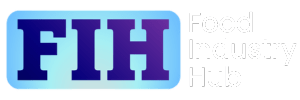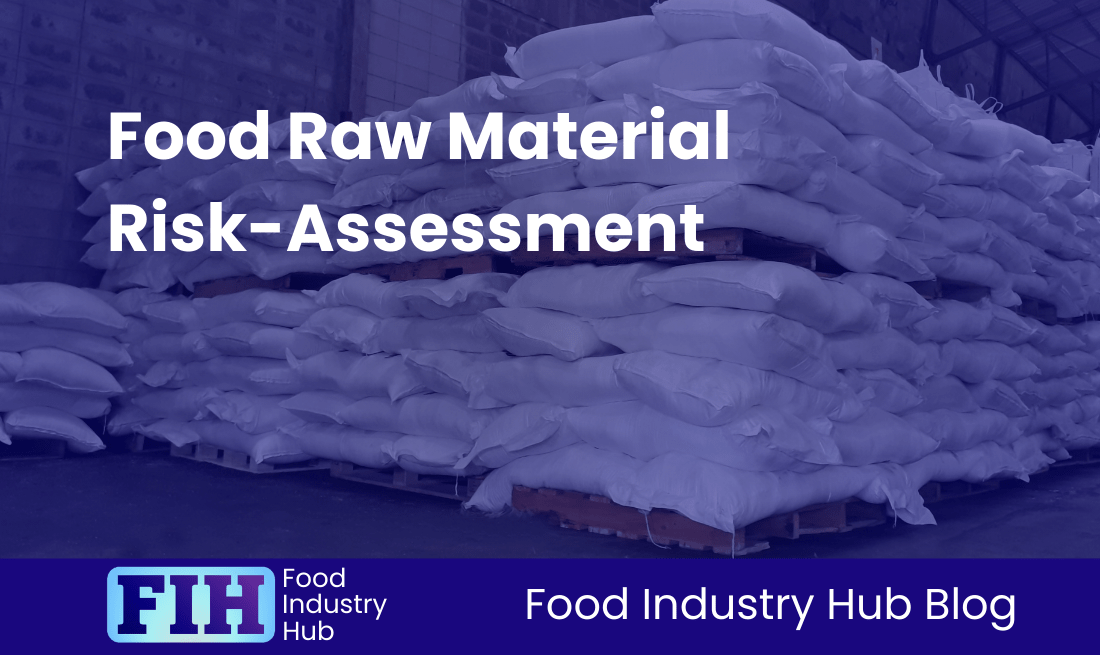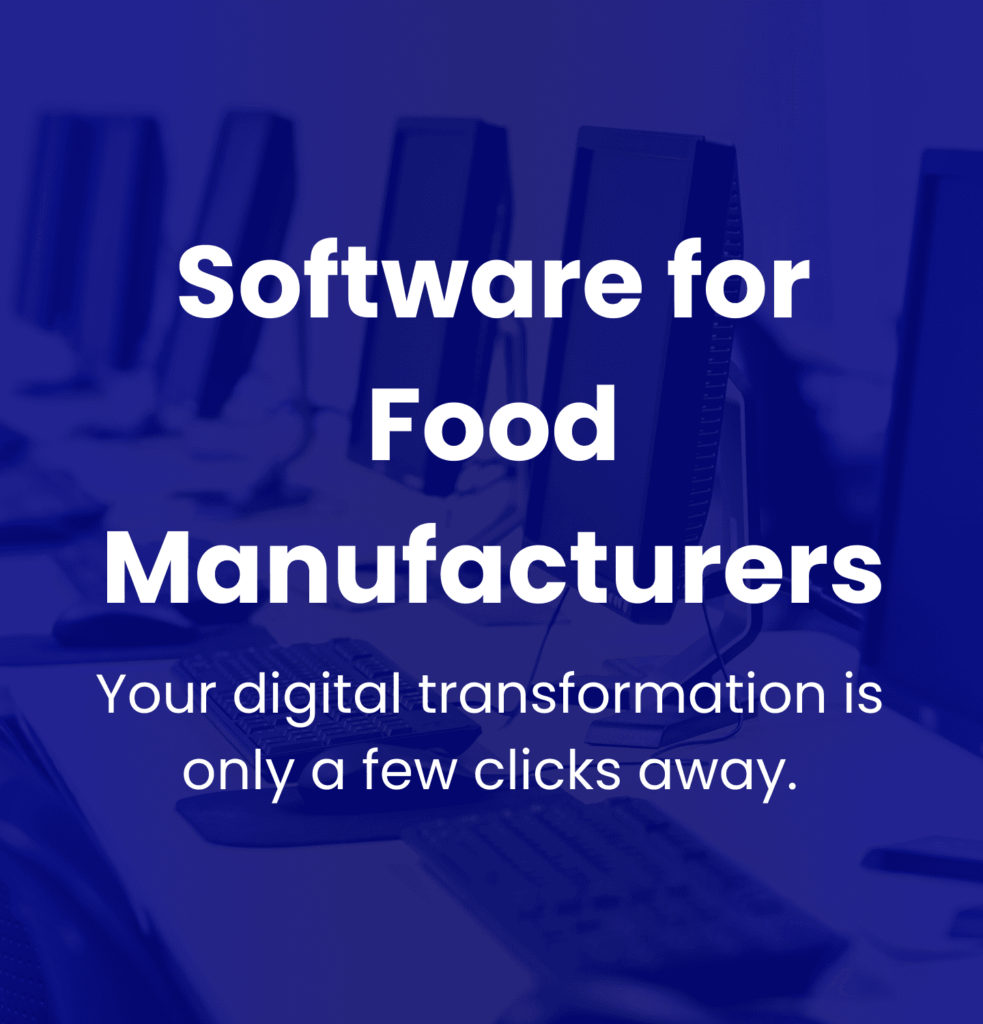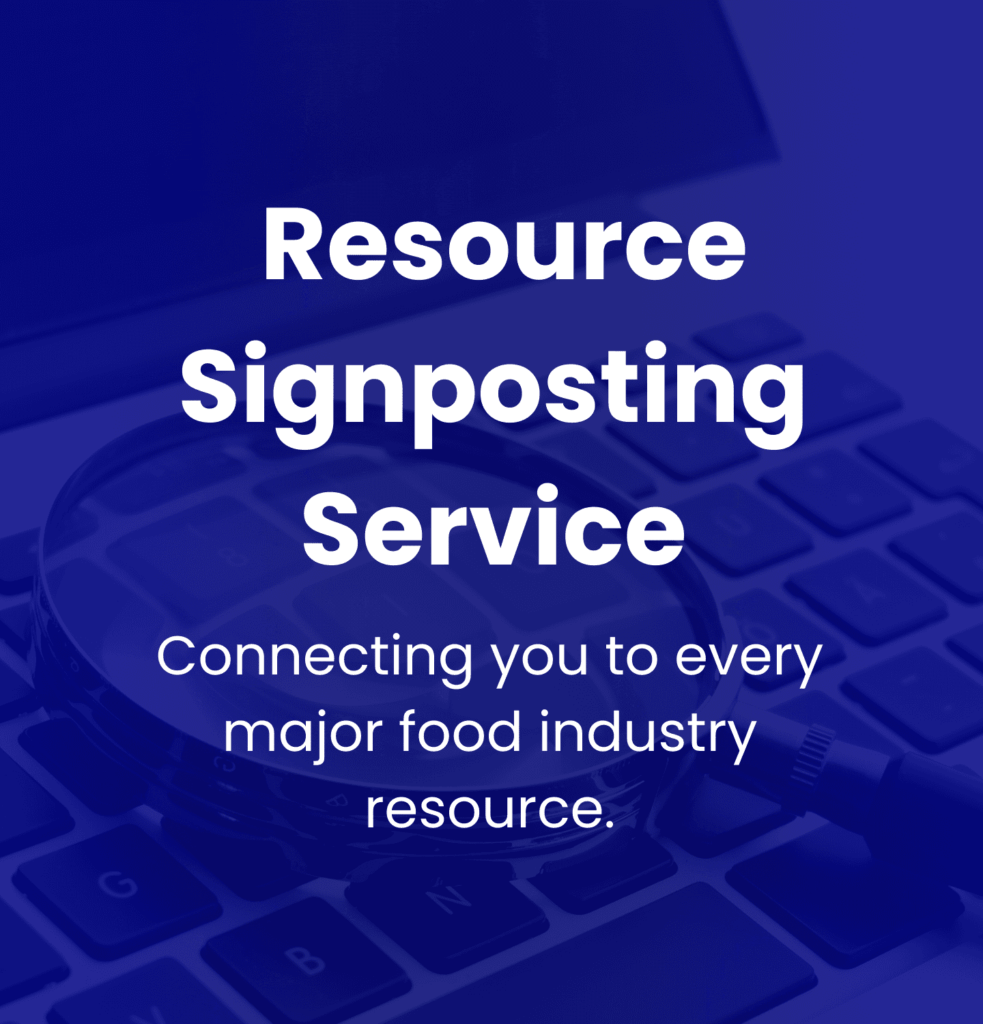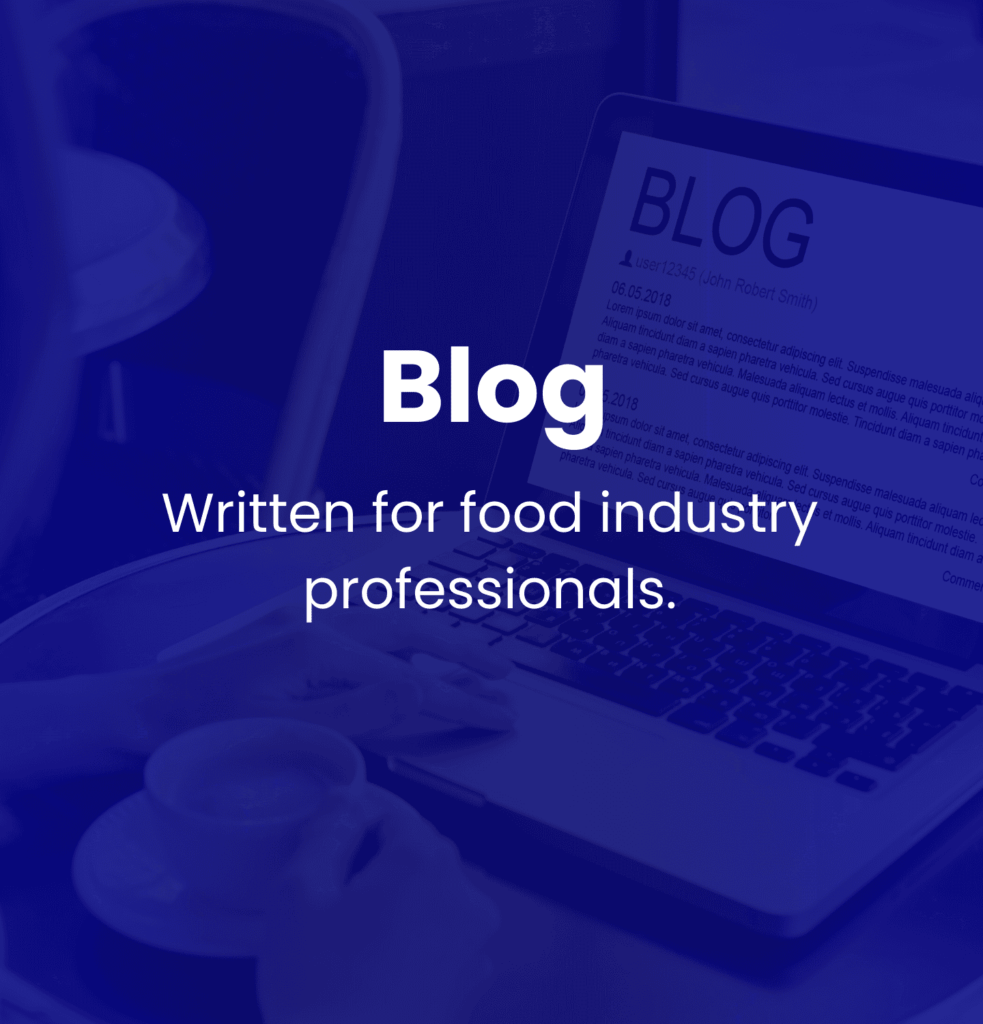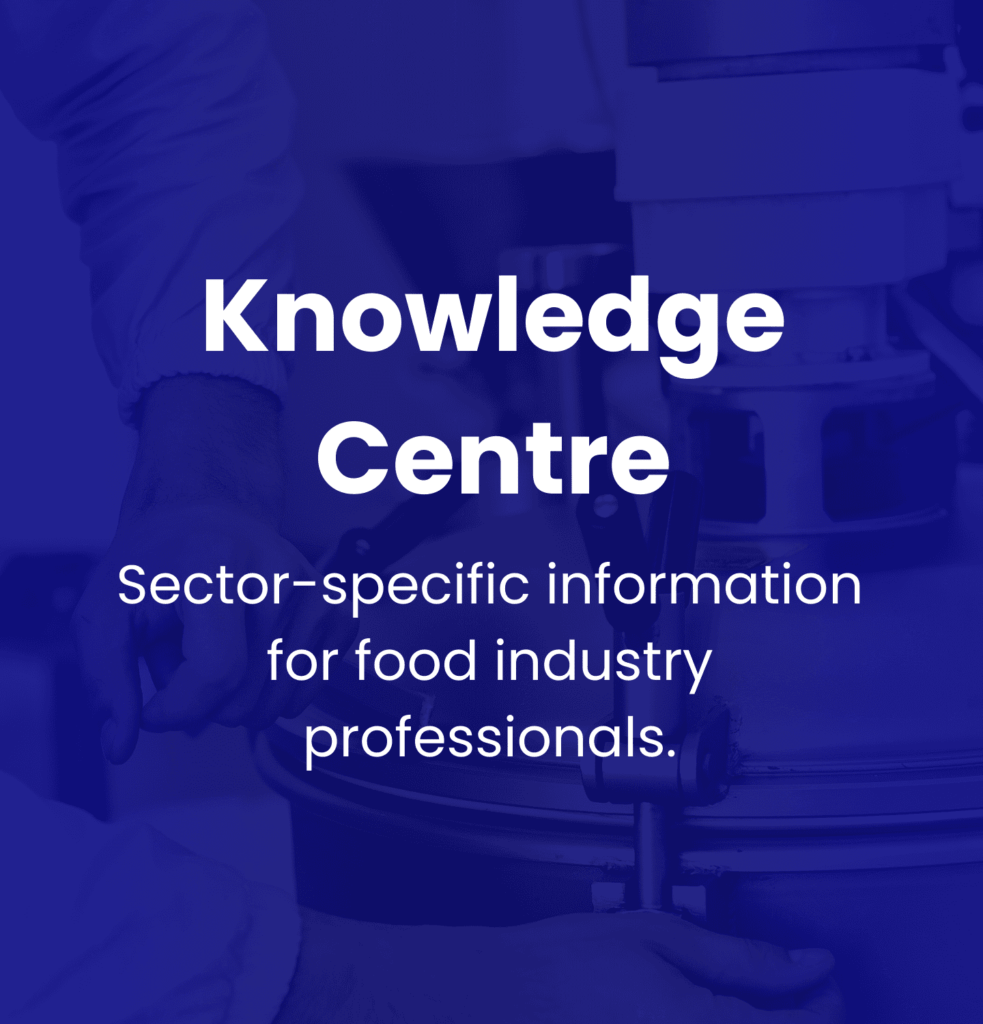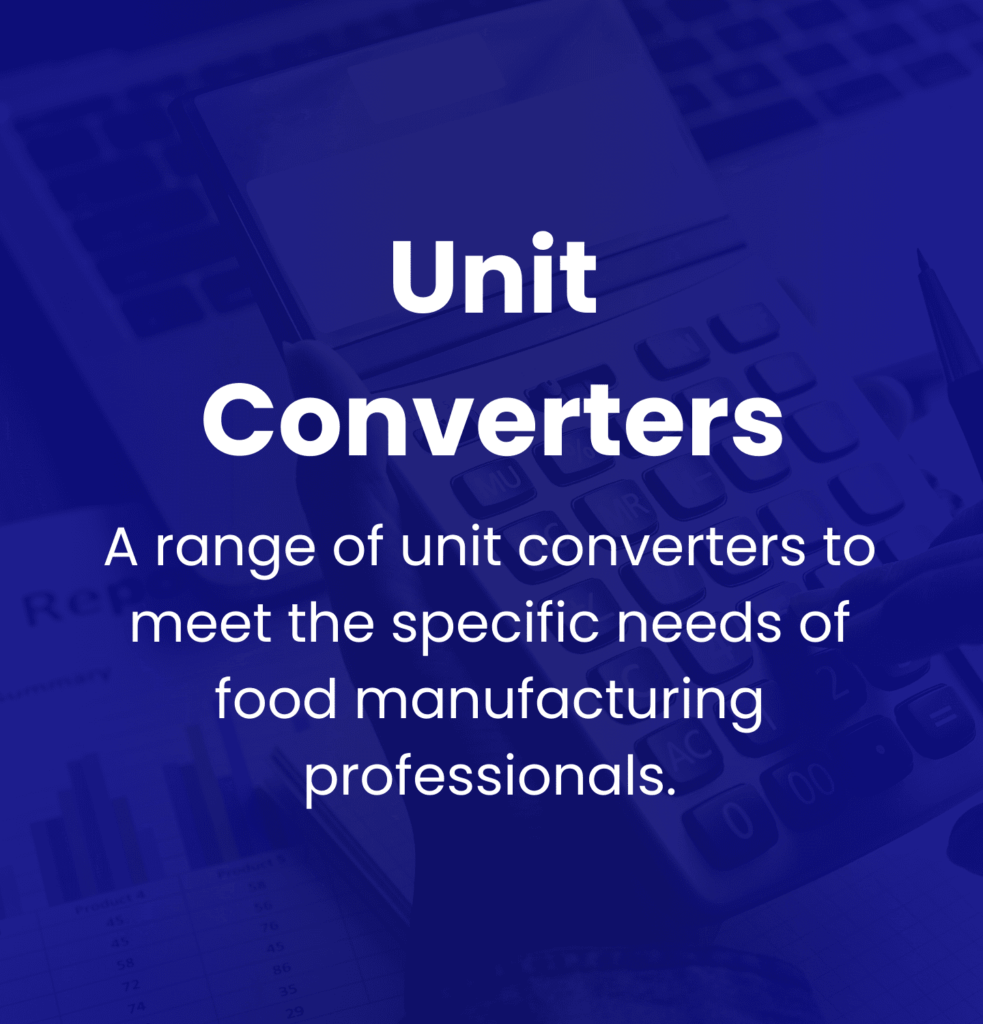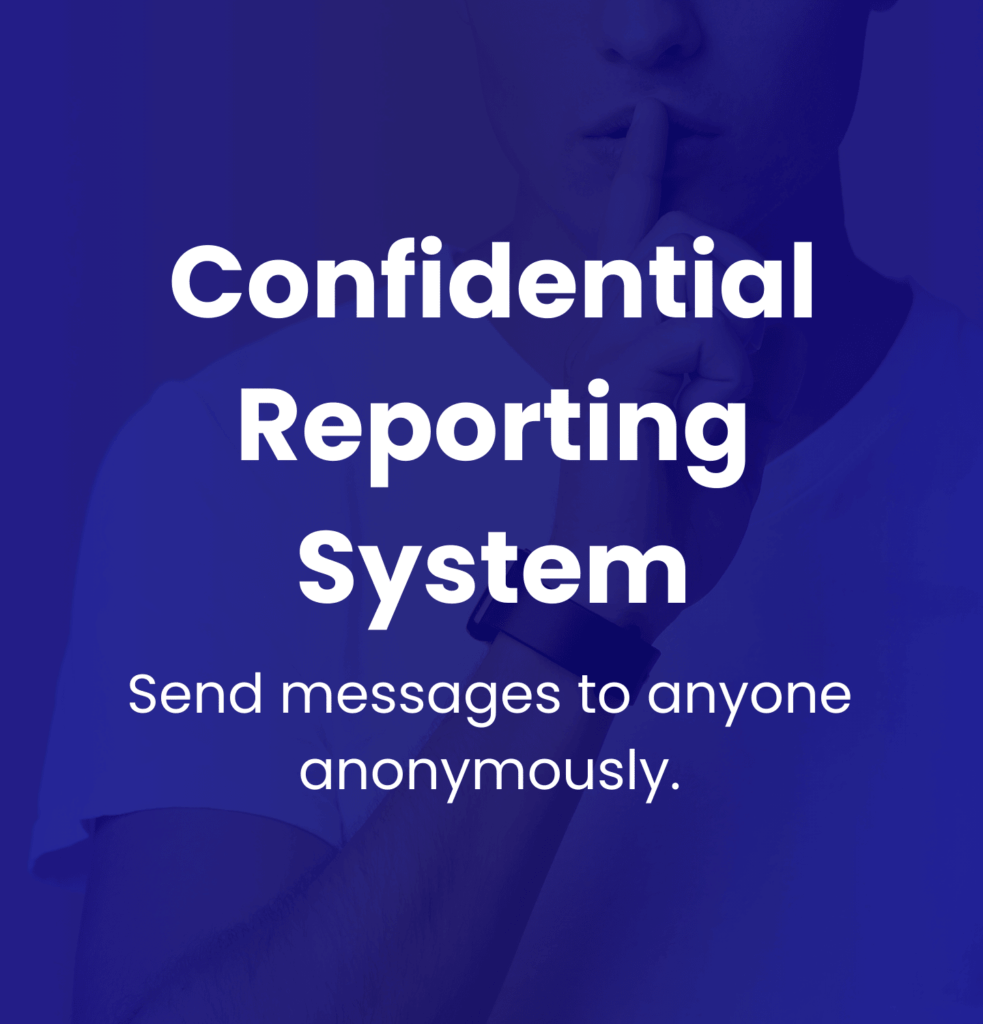know: Allergen Controls
Contents
Introduction
Key Takeaways
Regulatory Compliance Frameworks
Common Allergens and Labeling Requirements
Allergen Management Systems
Cross-Contamination Prevention
Supply Chain and Raw Material Risks
Training and Workforce Competency
Documentation and Traceability
Emerging Trends and Technological Innovations
Conclusion
Introduction
As key components of food safety and quality management, allergen controls primarily aim to prevent allergic reactions among consumers. They manage potential allergens throughout the food supply chain through a systematic approach to identify and monitor allergens while implementing strict measures during the manufacturing process. An Allergen Control Plan (ACP) consists of strategies from ingredient sourcing to detailed labelling, and effective cleaning practices to mitigate cross-contamination risks.
Allergen Management Systems
Setting up solid allergen management systems is essential for food manufacturers, serving not only to guard consumers but also to ensure compliance with legal standards. These systems help prevent severe allergic reactions, safeguard a brand’s reputation, and maintain consumer trust. With the global awareness of food allergies on the rise, manufacturers face a significant responsibility to establish effective allergen management practices.
Regulatory Compliance Frameworks
Allergen management’s regulatory compliance frameworks vary across different regions. The FDA in the United States enforces labelling requirements for eight primary allergens under the Food Allergen Labelling and Consumer Protection Act (FALCPA). The European Union mandates the disclosure of fourteen allergens in packaged foods. The UK follows these regulations closely but incorporates specifics aligned to post-Brexit standards.
Emerging Technologies
Emerging technologies, such as Predictive Allergen Monitoring, are transforming the management of allergen risks. These predictive systems utilise advanced detection methodologies, allowing manufacturers to anticipate and mitigate contamination risks before they become a problem, thereby improving overall safety.
Training and Workforce Competency
Training and a competent workforce are also key drivers in successfully managing allergens. Well-informed staff who understand allergen risks and proper handling practices are invaluable for effective allergen control. Regular training programmes can ensure that employees keep themselves abreast of current regulations and best practices.
Regional Nuances
Allergen control practices can vary widely due to cultural dietary preferences and regional regulatory requirements. Understanding these global and regional nuances is important for food manufacturers dedicated to maintaining high standards of food safety.
This introduction serves as a stepping stone to a more in-depth exploration of significant themes related to allergen management. These include comprehensive allergen control strategies, regulatory compliance measures, technological innovations, and the valuable role of workforce training. All these aspects contribute towards a holistic understanding of the best practices required for effective allergen management in the food manufacturing sector.
Key Takeaways
Identifying and lessening the risk of cross-contamination is of great importance in food manufacturing processes, particularly where allergens are concerned. Cross-contamination could occur at any stage of the process, from handling raw materials to production, packaging, and even shipping. This risk stresses the need for thorough protocols.
Effective strategies encompass the maintenance of clean equipment, segregating allergen-containing products, and implementing exclusive production runs for goods free from allergens. Consistent employee training forms an essential part of avoiding accidental allergen transfer from staff to food products.
Robust Documentation and Traceability
Robust documentation and traceability form the foundation of successful allergen management systems. Thorough records of ingredient sourcing, processing, and packaging help ensure compliance with regulatory requirements. These systems also enable swift identification and product recall in scenarios of allergen contamination, safeguarding consumer health and upholding business integrity. Correct documentation not only aids in legal compliance but also improves overall operational dependability.
Supplier Verification
Verifying suppliers is important in managing risks associated with raw materials. Thorough audits of supplier practices and regular testing of raw materials are needed to guarantee that allergens are appropriately declared and controlled. Clear communication and full allergen declarations from suppliers can further lessen the risk of unintended allergen presence, which enables manufacturers to uphold high safety standards.
Digital Solutions and Technological Innovations
Innovations in digital solutions and technology significantly increase the efficiency of allergen control practices. Advanced tracking systems for ingredients and monitoring processes facilitate real-time supervision and swift responses to possible contamination events. Technologies such as automated testing increase the precision and efficiency of allergen detection, thus reducing risks associated with human error. Innovative approaches in operational methodologies, encompassing equipment design and sanitation protocols, can also lower cross-contamination risks.
Adapting to Evolving Regulations
The importance of conforming to the regularly changing landscape of global and regional food safety regulations cannot be overstated. The food manufacturing industry must remain alert, regularly refreshing allergen management practices to meet new guidelines. Knowledge of international standards and the ability to put them into practice is key for compliance. As consumer awareness increases and regulations tighten, industries will need to be responsive in their allergen management strategies to assure consumer safety and maintain market access.
Food Industry Hub Management Systems can significantly boost the effectiveness of your food safety and quality management system, leading to improved confidence and elevated quality assurance throughout your operations.
Regulatory Compliance Frameworks
Food safety, quality, and legality encompasses multiple aspects, including the understanding and adherence to various regulatory frameworks related to allergens. These frameworks exist at both regional and global levels to protect consumer health and ensure transparency in food labelling practices.
EU Food Information to Consumers Regulation (FIC) and Its Implementation in the UK
The EU Food Information to Consumers Regulation (FIC) 1169/2011 was developed with the goal of standardising food labelling. It does this by mandating that consumers have access to comprehensive and precise information about the food they are buying. Under this regulation, companies are required to identify 14 major allergens explicitly and prominently within the ingredient lists of prepacked food products, thus facilitating easier recognition of potential allergens by the consumer [Source: EU Food Safety]. Although the UK has left the EU, it has retained these principles in its own legislation, with slight variations by region. This regulation guides food labelling practices in England, Wales, and Scotland, whilst Northern Ireland continues to follow EU rules as stipulated by the Northern Ireland Protocol [Source: Pinsent Masons].
UK’s PPDS (Prepacked for Direct Sale) Labeling Requirements
As of October 1, 2021, the enactment of Natasha’s Law has ushered mandatory requirements that foods prepared and packaged on-site (categorised as Prepacked for Direct Sale or PPDS) must clearly label allergen information on the packaging. This updated legislation is aimed at bolstering customer protection by enabling ease of identification of allergens in food products. This not only includes readily consumable items but also extends to items such as sandwiches and prepackaged salads [Source: Food Standards Agency].
FDA’s Food Allergy Labeling and Consumer Protection Act (FALCPA)
In the United States, the Federal Drug Administration enforces the Food Allergy Labeling and Consumer Protection Act (FALCPA). This law necessitates that food manufacturers label products containing any of the eight major allergens, which comprise peanuts, tree nuts, milk, eggs, fish, shellfish, wheat, and soy. Labels must use simple and easily discernible terms so that consumers can make informed decisions to avoid allergens [Source: PAGB].
‘May Contain’ vs ‘Contains’ Labeling: Implications for Consumers
The choice of terminology in allergen labelling can significantly influence the safety levels and decision-making of customers. A label stating ‘Contains’ signifies intentional inclusion of a specific allergen in a product, providing consumers with allergies critical information. In contrast, a ‘May Contain’ label suggests the potential risk of cross-contamination during manufacturing, which can seed uncertainty in consumers regarding product safety. The subtlety in language underscores the importance of clear communication about potential allergen risks and the trust associated with each claim [Source: Food Standards Agency].
Comparing Global Regulatory Requirements for Allergen Management Compliance
Allergen management regulations vary in their degree of enforcement and clarity across the world. In the EU and UK, clear labelling for prepacked foods is enforced, while in the US, FALCPA mandates the declaration of specific allergens. Other countries such as Australia and Canada have similar requirements centred on clarity and consumer protection, although what is considered mandatory may vary [Source: Food Standards Agency Technical Guidance]. It is fundamental for food manufacturers worldwide to align their operational practices to this framework and its global counterparts with the final aim of prioritising consumer safety.
Common Allergens and Labelling Requirements
An understanding of the common allergens, primarily known as the Big Eight, plays an important part in ensuring food safety and quality. The Big Eight allergens consist of milk, eggs, fish, crustacean shellfish, tree nuts, peanuts, wheat, and soybean. These allergens hold responsibility for nearly 90% of food allergy instances in the United States [Source: FDA]. As each allergen carries a risk of sparking severe allergic reactions, their highlight on food labels becomes imperative.
Profile of the Big Eight Allergens
The common sources of these allergenic include:
- Milk: Often, key proteins such as caseins and whey.
- Eggs: The proteins in both egg whites and yolks.
- Fish: Numerous species, including salmon and cod.
- Crustacean Shellfish: Shellfish like shrimp, lobster, and crab are common sources.
- Tree Nuts: Typically, almonds, walnuts, and pecans.
- Peanuts: Found in various types of peanut products.
- Wheat: Mostly in gluten-containing flour used in baked products.
- Soybean: Primarily in soy proteins used across an array of products.
Labelling Requirements
The Food Allergen Labelling and Consumer Protection Act (FALCPA) managed by the FDA lays down comprehensive labelling requirements aimed at consumer protection. Included amongst these stipulations is the clear identification of allergens on product labels. Generally conducted by listing the source of the allergen next to the related ingredient or adding a “contains” statement at the end of the ingredient list. Labels often read “lecithin (soy),” “flour (wheat),” or “whey (milk),” and feature a “Contains” statement highlighting potential allergens, such as, “Contains Wheat, Milk, and Soy” [Source: Covington & Burling LLP].
Beyond U.S. requirements, other regulatory authorities, like those in the EU, Canada, Japan, and Australia/New Zealand, enforce strict labeling of these allergens, in alignment with the guidelines laid down by the Codex Alimentarius [Source: University of Nebraska].
Significance of Lucid Communication for Consumer Safety
Effective communication via labelling is a significant aspect for consumer safety, especially for individuals susceptible to severe allergies. Incorrect product labels can pose life-threatening consequences for consumers. Therefore, ensuring accurate and inclusive labels not only helps consumers in making informed choices but also notably reduces the risks tied to food allergies. Proper labelling helps build trust between consumers and food manufacturers, upholding a commitment to safety and transparency in the food sector.
Sign-up for the Food Industry Hub Mail Service
We regularly produce new content for food industry professionals, and the Food Industry Hub Mail Service is the best way to stay up to date with the latest additions.
Signup today to be added to the Food Industry Hub mailing list.
Allergen Management Systems
Several frameworks and procedures exist to mitigate the risks posed by food allergens in production environments. Key amongst these are HACCP (Hazard Analysis Critical Control Point), Good Manufacturing Practices (GMP), and Standard Sanitation Operating Procedures (SSOPs). Additionally, formalised testing and validation processes can improve the effectiveness of allergen control measures.
HACCP’s Role in Controlling Allergens
HACCP, a systematic method, is instrumental in pinpointing, assessing, and managing food safety hazards, such as allergens. Within allergen management, HACCP establishes a well-structured process that addresses allergen risks across the food production chain. The process begins with a hazard analysis identifying potential allergens present in ingredients, procedures, and equipment. Based on this analysis, specific control points are established. These are stages within production where controls can effectively prevent allergen cross-contact, thereby ensuring appropriate safety measures are in place. In addition, preventive measures, like detailed cleaning and sanitation protocols, are executed to maintain an environment free of allergens, a key step towards delivering products safe for consumers with allergies [Source: HACCP Mentor].
The Preventive Role of Good Manufacturing Practices (GMP)
Good Manufacturing Practices (GMP) play a key role in preventing allergenic product clashes. They enable consistent sanitation and appropriate handling of allergenic ingredients. A primary component of GMP involves maintaining a tidy, orderly manufacturing environment. Such a setup significantly reduces the chances of cross-contamination. This includes imposing exacting hygiene protocols, such as regular sanitation of equipment and surfaces, to minimise the probability of allergenic residues being transferred onto non-allergenic products. Efficient ingredient control also forms a part of this, ensuring accurate ingredient labelling and management to avoid mix-ups. Training staff members on allergen handling procedures is also essential, enabling them to recognise and manage allergens responsibly within the production process [Source: FDA].
Standard Sanitation Operating Procedures (SSOPs) with Specific Focus on Allergens
Standard Sanitation Operating Procedures (SSOPs) are key for maintaining hygiene standards in food processing environments, particularly those handling allergens. Effective SSOPs outline comprehensive cleaning protocols catered specifically towards equipment and surfaces that may come into contact with allergenic ingredients. This includes scheduling regular cleanings to prevent buildup of allergen residues. SSOPs should also detail strategies for managing airborne dust, and include methods for controlling and mitigating airborne allergens that may settle on surfaces. Offering staff training on these procedures is also imperative to ensure consistent adherence to best practices, enhancing compliance with allergen management standards and reducing the likelihood of cross-contamination [Source: Allergen Bureau].
Procedures to Test and Validate Allergen Detection
Testing and validation are important components of any effective allergen control system. Comprehensive testing methods are used to identify allergenic residues on equipment and surfaces. Options like protein swabs assist in allergen detection. Alternatively, technologies like ATP swabs can be employed to verify the cleanliness of the environment effectively. Regular validation protocols add an extra layer of assurance, checking that cleaning procedures successfully reduce allergen levels to acceptable limits. Documenting these testing results paves the way for accountability and evidence of regulatory compliance. Overall, systematic testing and validation protocols contribute to a robust allergen management system that prioritises consumer safety.
Cross-Contamination Prevention
The need to prevent allergen cross-contamination in food manufacturing is paramount for consumer safety and regulatory compliance. This section outlines the key strategies for equipment design, operational features, controlling airborne allergens, and the implementation of color-coded tools for effective allergen management.
Equipment Design and Operational Features
Efficacious equipment design serves as a cornerstone in reducing allergen cross-contamination. Important aspects to consider include adopting hygienic design principles, which aid in hassle-free cleaning and mitigate the risk of allergen residues. For instance, adherence to the guidelines put forth by the European Hygienic Engineering & Design Group (EHEDG) ensures thorough cleaning, thereby preventing the accumulation of allergens [Source: FDA].
Employing dedicated equipment for allergen-rich ingredients is a significant preventative measure. This strategy minimises cross-contamination risks by allocating separate processing lines or tools specifically for products containing allergens. Introducing valve systems in closed processing routes assists in controlling ingredient flow and reduces cross-contamination potential. Regular inspection and secure positioning of these valves are necessary to preempt mix-ups.
Airborne Allergen Control Systems
Unattended airborne allergens could cause sizable cross-contamination. Key preventive measures include the use of sophisticated air filtration systems such as microfiltration, which can eliminate allergen particles from the air in sensitive areas, particularly during packaging processes. Instituting a positive air pressure environment in these locations can deter allergen particles from infiltrating zones where allergen-free products are processed.
Utility of Color-Coded Tools and Cleaning Practices
Using color-coding systems for tools and work practices effectively segregates allergenic and non-allergenic ingredients during production. These visual cues ensure that dedicated equipment is used for the handling of specific allergens, thereby reducing the likelihood of operational errors. Additionally, tools used for allergenic ingredients should be stored separately on color-coded racks or shadow boards, indicating distinct areas to circumvent cross-contamination.
Overview of Preventive Measures for Cross-Contact
Prevention of allergen cross-contact requires a comprehensive approach. Physical segregation of ingredients containing allergens from non-allergenic ones is essential. This can be accomplished by using dedicated storage areas or production lines for allergenic products. Implementation of production scheduling to separate allergenic and non-allergenic products also serves as an effective strategy. Grouping allergenic runs or staggering production can additionally minimise cross-contact risks.
Cleaning and sanitising protocols must be strictly upheld, ensuring that all equipment is thoroughly cleaned between uses to remove any residual allergens. It is important to perform allergen testing post-sanitation to authenticate efficiency. Additionally, delivering staff training on allergen management principles, such as allergen identification, cross-contact prevention, and correct handling and cleaning procedures is highly important.
By collectively employing these strategies, food manufacturers can uphold a safe production environment and effectively assure consumer safety from allergen exposure.
Supply Chain and Raw Material Risks
Importance of Rigorous Supplier Verification and Audits
The practice of effective allergen management relies heavily on in-depth supplier verification and periodic audits, all aiming to guarantee precise allergen declarations within the food manufacturing supply chain. This method requires suppliers to commit to a well-documented allergen control plan and to provide assurances about the absence of undeclared allergens in their ingredients. It is equally important for suppliers to inform manufacturers in a timely manner about any changes in allergen status, as such changes pose significant risk to food safety. Carrying out audits offers manufacturers the opportunity to review these plans, check the supplier’s compliance with allergen control measures, and evaluate established cleaning procedures and risk assessment protocols [Source: Quality Assurance Magazine].
Risk Management Strategies for Allergens Linked with Non-Food Ingredients
Allergen risks can also originate from non-food ingredients, making it imperative to have extensive risk management strategies in place. It is important for manufacturers to ensure that their allergen management plans encompass all materials that come into contact with food, including packaging and processing aids. To handle this effectively, employing principles such as Hazard Analysis Critical Control Points (HACCP) can assist in systematically identifying and managing allergen risks related to non-food ingredients. Regular testing and monitoring practices should be incorporated as well, to confirm that these non-food items remain allergen-free and prevent any potential cross-contamination [Source: Covington & Burling].
Best Practices for Maintaining Communication with Suppliers Concerning Allergen Information
Transparent and efficient communication with suppliers is key to managing allergens effectively. By setting clear expectations around allergen control measures and providing pertinent documentation and training for suppliers, manufacturers can foster a mutual understanding of allergen-related duties. Frequent feedback and requests for updates on any alterations in product formulation or manufacturing processes help to keep all parties well-informed. Suppliers should be urged to provide thorough documentation that includes assurances regarding their ingredients’ freedom from undeclared allergens, in combination with procedures to minimise allergenic risks during production. By encouraging this cooperative relationship, manufacturers can enhance safety and ensure regulatory compliance throughout their supply chains [Source: PMC].
Training and Workforce Competency
The fundamental role of allergen awareness programs in bolstering food safety standards across food manufacturing and service sectors cannot be overstated. Employees are educated about the seriousness of food allergies, major allergen identification, and strategies to prevent allergen cross-contact during food preparation and service. By prioritising these awareness initiatives, organisations not only enhance safety for their customers but also reduce potential liabilities and reputational risks associated with improper allergen management. A notable example is the implementation of Natasha’s Law in the UK, requiring explicit allergen labelling on pre-packaged foods [Source: NEXDINE].
Regular implementation of effective food allergen training ensures regulatory compliance by enabling staff awareness and commitment to relevant laws and best practices. Comprehensive training includes current updates to inform employees about the identification of new allergens, regulatory changes, and interactive engagement approaches such as quizzes and role-playing scenarios [Source: Charm Sciences].
Role of Cleaning Validation Techniques and ATP Testing
Cleaning validation techniques and ATP (adenosine triphosphate) testing play a significant role in upholding Sanitation Standard Operating Procedures (SSOPs) within food manufacturing environments. Effective cleaning validation consists of detailed procedures confirming that equipment and surfaces are devoid of allergenic residues. This process includes assigning responsibilities, establishing sample protocols, and adopting analytical methods to verify cleaning efficacy [Source: People for Cleaning].
While ATP testing does not directly detect allergens, it complements cleaning validation by assessing surface cleanliness to ensure all residues associated with allergens and potential contaminants have been adequately eliminated. Routine ATP testing helps in complying with SSOP standards, lessening the risk of allergen cross-contact in food production and affirming consistent adherence to sanitation practices [Source: Rochester Midland].
Employee Education Strategies for Maintaining Competency in Allergen Management Practices
Maintaining workforce competency in allergen management almost invariably involves effective training. Comprehensive training programs should include a basic understanding of food allergies such as major allergen identification and the severity of potential reactions. Topics comprising preventive techniques for cross-contact, suitable labelling procedures, and emergency response measures like using epinephrine auto-injectors, are significant components of this education [Source: USDA].
Utilising engaging training methods, such as web-based platforms, amplifies employee learning and accessibility. It allows organisations to reach out, especially in diverse workforce environments. Continuous education through regular refresher courses keeps staff updated on new allergens, relevant regulations, and evolving allergen management best practices [Source: PMC].
By focusing attention on these training strategies, organisations can notably improve their allergen management capabilities, ensuring a safer food production environment for consumers.
Documentation and Traceability
The Significance of Real-Time Ingredient Tracking Systems in Allergen Management
Real-time ingredient tracking systems are a key tool in allergen management within food manufacturing. These systems allow for immediate detection of potential allergens as ingredients make their way through the supply chain. This enables companies to react quickly to contamination risks. Continuous monitoring of ingredients helps manufacturers to avoid cross-contamination and uphold regulatory standards. Such transparency is necessary, not only for adhering to legal requirements but also for safeguarding consumer health. In case of potential allergen-related issues, real-time tracking facilitates quick identification and removal of affected products, thus reducing risk and keeping the company’s strong reputation for quality and safety intact.
The Role of Batch-Specific Records in Audit Compliance and Traceability
Batch-specific records are vital for maintaining compliance with audits and giving assurance of effective traceability across the supply chain. Such records form a clear audit trail, simplifying the demonstration of adherence to regulatory and industry standards during audits. If allergen contamination is discovered, detailed batch records help quickly identify and isolate affected products, facilitating recalls and minimising health risks. Additionally, routine analysis of batch-specific data can highlight trends or consistent problems and thus guide improvements in allergen management processes. Appropriate record-keeping builds transparency and trust between consumers and regulatory bodies [Source: Food Safety Magazine].
Effective Strategies for Maintaining Documented Allergen Controls
For allergen controls to be adequately documented throughout the manufacturing process, several effective strategies should be put into place:
- Ingredient Labelling and Communication: All ingredients should be clearly marked with allergen information upon receipt and during processing. In addition, it is important to maintain sound communication channels with suppliers when it comes to allergen information, to ensure all parties possess accurate and current data concerning allergenic ingredients.
- Real-Time Data Management: The use of food safety software and AI can improve the precision and efficiency of allergen tracking and documentation processes. These technologies allow for continuous monitoring, enabling manufacturers to respond quickly to identified risks.
- Procedural Documentation and Staff Training: Detailed documentation of allergen handling procedures is important. These documents should be made easily accessible to all staff involved in the manufacturing process. Frequent training programmes can ensure employees follow and respect these procedures, greatly reducing the potential for cross-contamination [Source: BRS MENA].
- Regular Audits and Reviews: Consistent audits of allergen management systems ensure regulations are met and pinpoint opportunities for process enhancements. This proactive approach not only improves safety but also supports the ongoing development of allergen management practices.
Pursuing these effective strategies helps protect food products, strengthens regulatory compliance and builds consumer confidence in the brand.
Emerging Trends and Technological Innovations
The Role and Benefits of Digital Allergen Databases
Digital allergen databases play a fundamental role in managing allergens within the food industry effectively. These platforms gather all-important allergen information, helping manufacturers to keep detailed, accurate records which are crucial for both compliance and consumer safety. Notably, databases such as AllerBase offer granular data on experimentally-verified allergens, encompassing their molecular structures and cross-reactivity [Source: Oxford Academic]. By centralising this information, manufacturers can better understand and anticipate allergenicity, which in turn, can help enhance food safety and reinforce consumer trust.
Potential Technological Innovations: Blockchain for Traceability
Blockchain technology is increasingly recognised for its potential to augment traceability in the food supply chain, particularly in relation to allergens. By generating a transparent record of ingredient sourcing, food manufacturers can ensure that allergen information is precisely registered and readily available. Such transparency supports rapid identification of tainted products while it also permits prompt response measures to lessen the risks associated with allergen exposure, thereby enhancing consumer safety significantly.
Trends and Advancements in Allergen Detection and Management Tools
The field of allergen detection and management is evolving, encouraged by a plethora of promising technological advancements.
Progressive detection technologies, such as nano-biosensors and molecular assays, have substantially improved allergen testing’s sensitivity and specificity compared to conventional methods. These breakthroughs allow for swift identification of allergenic proteins at lower concentrations, reducing the risk of false-negative results, and aiding proper labelling [Source: CPD Online].
In the food service sector, modern point-of-sale (POS) systems are becoming increasingly essential in managing allergen data. These systems automate allergen tagging, update menus on-demand, and streamline kitchen operations by minimising allergen management errors [Source: Lavu]. Such advancements boost customer safety and operational efficiency, particularly in contexts where food allergies are common.
In essence, these advancements indicate a sizeable shift towards improved allergen management practices within the food industry, underscoring the importance of robust allergen control systems to protect consumers effectively.
Conclusion
Allergen management systems continue to play an integral role in food safety within the manufacturing sector. Successful allergen control not only protects consumers with allergies but also ensures compliance with regulatory requirements. As this industry continues to progress, we see evolving key issues and trends, particularly the increased use of innovative detection technologies, the emphasis on workforce training, and the continued need for thorough regulatory compliance.
The Rising Importance of Training and Maintaining Workforce Competency
Workforce training is becoming increasingly significant for effective allergen control. A workforce that is knowledgeable about allergens, proper handling procedures, and the appropriate response to allergic reactions can be an asset. Regular training programs are a necessity for keeping employees updated on potential allergen risks and best management practices. This training not only helps to maintain compliance with food safety standards but also reduces the risk of allergen-related incidents and expensive recalls, thereby safeguarding consumers and preserving the manufacturer’s reputation [Source: CPD Online].
Unwavering Requirement for Regulatory Compliance
Adherence to established regulatory guidelines, such as the FDA’s Food Allergen Labeling and Consumer Protection Act (FALCPA) and equivalent global regulations, remains an essential component of allergen management systems. These measures not only safeguard consumers but also help manufacturers maintain public trust. Continual validation of allergen testing methods is necessary for ensuring consistency and compliance with these regulations, thereby providing safe food products for everyone [Source: Food Safety Tech].
Future Prospects for Allergen Management Practices
Emerging technologies such as AI-driven systems and point-of-care testing devices present opportunities for the refinement of allergen management practices. These tools foreseeably offer improved efficiency and accuracy in allergen detection, potentially enabling faster decision-making in identifying allergen risks, timely interventions, and enhanced compliance with food safety regulations. As the variety of allergenic ingredients evolves, the demand for adaptive allergen management systems will likely increase.
The Need for Comprehensive Allergen Control Systems
A comprehensive allergen management strategy, incorporating varied facets like rigorous testing protocols, effective labeling practices, and continuous employee training, is quintessential. Amid the rising prevalence of food allergies, such extensive allergen controls will continue to be an essential aspect of responsible food manufacturing. Besides enhancing consumer safety, these systems also contribute to maintaining the integrity of the food supply chain and furthering public health initiatives against food allergies [Source: Food Safety]. By emphasizing training, compliance, and the incorporation of technological advancements, the food industry can continue to hone allergen management practices and safeguard vulnerable consumers.
About The Food Industry Hub Knowledge Centre
The Food Industry Hub knowledge centre delivers informative content on a variety of topics pertinent to the food manufacturing industry.
You can return to all topics by clicking here.
From The Food Industry Hub Signposting Service
Additional resources from The Food Industry Hub Signposting Service.
From The Food Industry Hub Blog
Expanding on this topic with related content from our blog.
